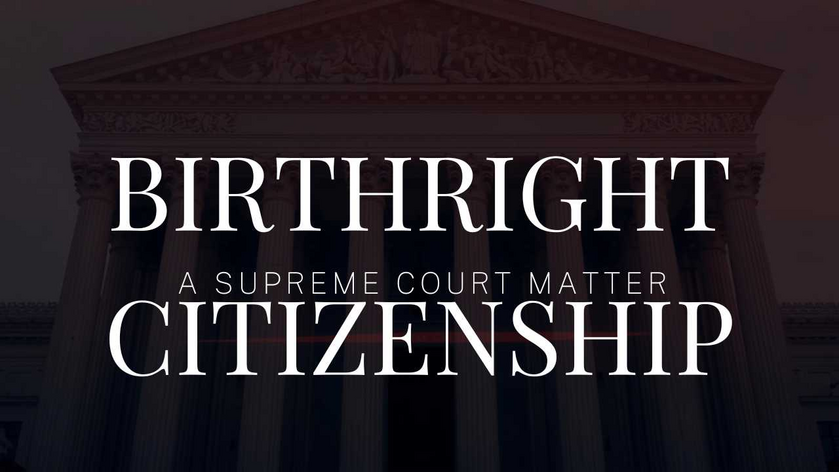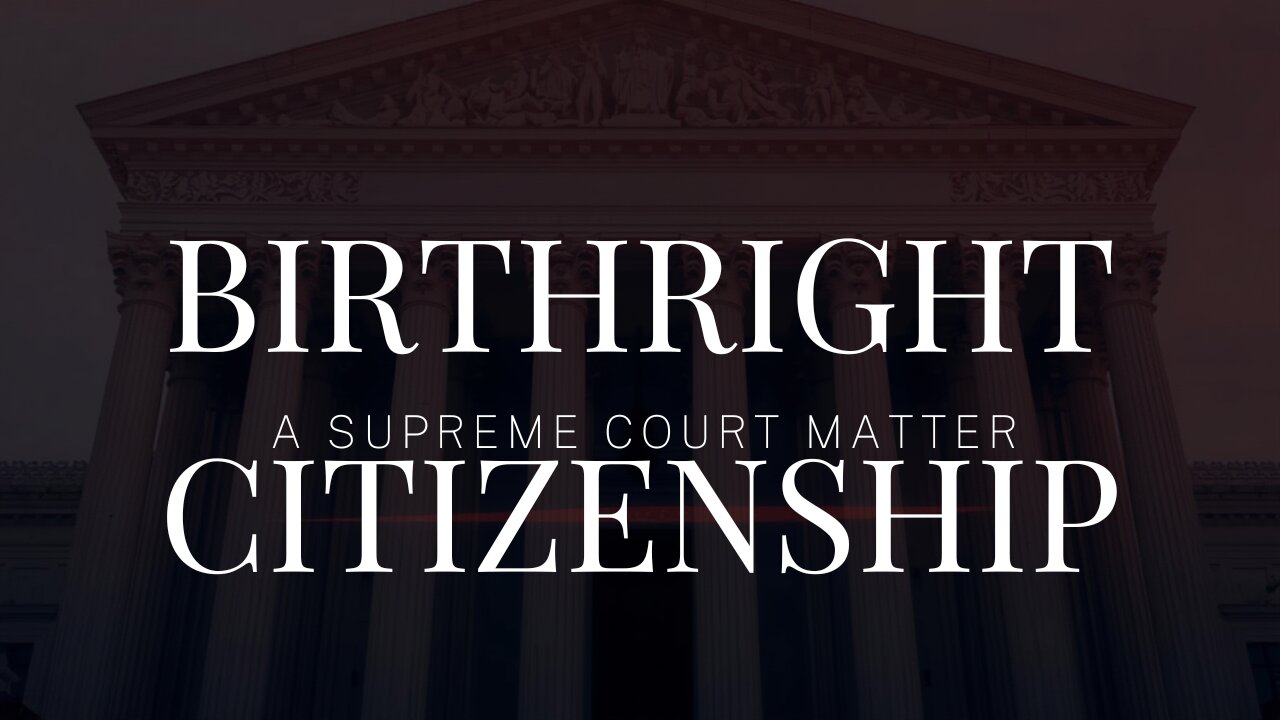Antisemitism has become a plague on American political discourse ever since the Fourth Arab-Israeli War began. But last night the House of Representatives applied a cure worse than the disease could ever be. They have, quite simply, passed a federal hate-speech law. That law even targets certain foundational writings – of both the other Abrahamic faiths – that speak against Jews as a people. Under that new law, even quoting those Scriptures could become a criminal act. This law might also criminalize Covenantal Theology, to which more than half of all Christians adhere. Expect immediate judicial challenge to this law on at least two, perhaps three First Amendment grounds. Sadly, the most paranoid voices – on the American political right – will seize upon this law as vindicating their position. The result will be a severance of the special relationship between Jew and Christian.
The problem of antisemitism
Antisemitism always requires a conspiracy theory. This is an attempt to explain all political evils as the results of the bad acts of an ethnic gang. Most “conspiracists,” for lack of a better term, use the word mafia to describe their hate targets acting collectively.
To condemn all conspiracy theories as ipso facto untrue is to oversimplify – the very thing antisemites do. So one must test the truth claims of any conspiracy theory against historical and other evidence. Of course, conspiracy thought by its very nature might dispute some evidence as fabrication by the conspirators one suspects. Nevertheless, objective standards of proof do exist, and applying them is part of critical thinking – literally, thinking like a judge.
Different Gentile (literally, “from nations other than the Jews”) groups make different claims against Jews as such. Muslims bear them a grudge dating back to their rejection of Muhammad’s Koran in Medina. (The Fighting Words, as in “fight and slay the infidels!”, date from that encounter.) The only reason to mention Adolf Hitler’s elaborate conspiracy theory is the bitter fruit it bore, including six million murders. Hitler set out to conquer the world, and died ignominiously in Der Bunker beneath the Berlin Chancellery. So no one takes his claims seriously – except in an attempt to seek “external” validation of their own claims.
Manifestations
The spectacle of sympathizers for the Islamic Resistance Movement (Arabic Harakah al-Muqāwamah al-Islāmiyyah, abbreviated HAMAS) taking over classroom and administrative buildings in American colleges and universities, in a manner this country has not seen since the days of the anti-Vietnam demonstrations by the old Students for a Democratic Society (SDS) and the Youth International Party (Yippies) is bad enough. And one expects antisemitism to divide the Grand Left Coalition, simply because a client group of that coalition attacked members of that ethnic group that supplies some (but by no means all) of the key leaders of the American political left. And those key leaders know it! Witness this declaration by Sen. Charles M. Schumer (D-N.Y.).
But there’s more. Gentiles look at what Jews have achieved, through hard work and application of their talents. But instead of thinking how to emulate this work ethic and develop their own talents, too many Gentiles prefer to believe that Jews have conspired against them, to block achievements that should have been theirs. This attitude has sullied our literature; witness William Shakespeare’s The Merchant of Venice.
How ironic, that the left regards the same group that has always provided much of its leadership, as “oppressors.” But the right has its own problem. Many of them look at the Jewish history of voting Democratic and supporting the causes of those “ideological fellow travelers” Schumer mentioned in his speech. Then, to their shame, they say, “It serves them right.”
Covenantal theology
Never mind, by the way, that at least one Jew recently urged her fellow Jews to stop embracing leftist politics.
We now come to the greatest impetus for antisemitism among Christians: covenantal theology. CNAV has discussed this before. Covenantal theology says that the Church inherits all the promises God made originally to the Jews in the Abrahamic and Davidic Covenants. That would include a plot of land “from the river of Egypt [the Wadi al-Arish, not the Nile] to the river Euphrates.” What would the Church need with so little land? The Church is supposed to spread its Good Message worldwide.
Covenantal theologians speak of “the false doctrine about Israel” and its “impact” on American politics. They also accuse Israel, without evidence or definition, of committing “atrocities” against usually unnamed targets.

(Separately, this particular influencer accuses Israel of creating HAMAS, forgetting that HAMAS is the Gazan chapter of the Muslim Brotherhood.)
In the face of the refusal of nearly half of Christendom to accept their ideas, the Covenantalists have come up with a new canard: there is no longer any such thing as an authentic Israelite. All who call themselves Jews, they say, are actually Khazars. These Khazars once ruled what is now Ukraine, then disappeared from history. According to the Khazar Theory, they all mass-converted to Judaism, then migrated north and west as the Ashkenazic Jews. (The Sephardic or literally Spanish Jews returned to the Holy Land after Ferdinand, Isabella and Torquemada expelled them from Spain.)
The new law against antisemitism
Now the House has seen fit to pass a law that antisemites on the American political right will seize upon. They will cite this as vindication of every claim they are now making about “Jewish control.”
Jim Hoft at The Gateway Pundit summarizes this law (H.R. 6090, the Antisemitism Awareness Act). Rep. Mike Lawler (R-N.Y.) proposed it and saw it through.
https://twitter.com/RepMikeLawler/status/1785786891490501111
This bill passed 320-91. Three prominent Republicans posted their dissent on X: Reps. Marjorie Taylor Greene (R-Ga.), Matt Gaetz (R-Fla.), and Thomas Massie (R-Ky.).
https://twitter.com/RepMTG/status/1785755752432296283
https://twitter.com/RepMattGaetz/status/1785762509187678637
https://twitter.com/RepThomasMassie/status/1785686846426488942
This remarkably short bill simply asks the Department of Education to add antisemitism to a list of possible violations of Title VI of the Civil Rights Act of 1964. The problem is that this bill specifically refers to a definition of antisemitism by the International Holocaust Remembrance Association (IHRA). That definition, courtesy of the Wayback Machine, includes without limitation:
1. Calling for, aiding, or justifying the killing or harming of Jews in the name of a radical ideology or an extremist view of religion.
2. Making mendacious, dehumanizing, demonizing, or stereotypical allegations about Jews as such or the power of Jews as collective – such as, especially but not exclusively, the myth about a world Jewish conspiracy or of Jews controlling the media, economy, government or other societal institutions.
3. Accusing Jews as a people of being responsible for real or imagined wrongdoing committed by a single Jewish person or group, or even for acts committed by non-Jews.
4. Denying the fact, scope, mechanisms (e.g. gas chambers) or intentionality of the genocide of the Jewish people at the hands of National Socialist Germany and its supporters and accomplices during World War II (the Holocaust).
5. Accusing the Jews as a people, or Israel as a state, of inventing or exaggerating the Holocaust.
6. Accusing Jewish citizens of being more loyal to Israel, or to the alleged priorities of Jews worldwide, than to the interests of their own nations.
7. Denying the Jewish people their right to self-determination, e.g., by claiming that the existence of a State of Israel is a racist endeavor.
8. Applying double standards by requiring of it a behavior not expected or demanded of any other democratic nation.
9. Using the symbols and images associated with classic antisemitism (e.g., claims of Jews killing Jesus or blood libel) to characterize Israel or Israelis.
10. Drawing comparisons of contemporary Israeli policy to that of the Nazis.
11. Holding Jews collectively responsible for actions of the state of Israel.
No one but a radical Muslim would actually sympathize with Example One above. (At least, CNAV hopes not! Besides, it’s an endorsement of murder.) Dwight D. Eisenhower sought to head off Examples Four and Five at the pass. Then-Ambassador Daniel Patrick Moynihan famously dissented from a United Nations vote directly following Example Seven. Example Two is a claim without evidence, and Three constitutes guilt by association. Six begs the question of why any “host nation” would have any “interest” that the State of Israel would threaten. Eight and Eleven violate a fundamental principle of justice, and Ten is simply absurd.
Attacks on Scripture
But Reps. Greene, Gaetz and Massie have every right to take alarm at Example Nine. The blood libel part is not so concerning. Who seriously believes that human blood, Jewish or Gentile, can ever be an ingredient in Passover matzoh? But when the IHRA speaks of “claims of Jews killing Jesus,” they now dispute Scripture, and history.
Indeed, Loaves and Fishes Studios and Out of Order Studios are now producing a planned seven-season streaming show. It’s called The Chosen, and it treats the life of Jesus. That will certainly include a Passion play. Will the Department of Education slap a sanction on those studios under Title VI? Will they demand the impounding and destruction of motion pictures like Ben-Hur (three versions), The Robe, The King of Kings, The Greatest Story Ever Told, The Passion of the Christ, or earlier television efforts like The Bible? All these projects have Passion plays, and some are built around them.
Indeed, Matt Gaetz cited three passages in Scripture that could provoke a Title VI citation. They are Acts 4:!0, 1 Thessalonians 2:14-16, and Acts 3:14-15. CNAV could also cite:
Acts 6:11-8:1, recounting the arrest, trial, and execution by stoning of St. Stephen.
Acts 9:1-6, in which Paul of Tarsus sees the Light on the Damascus Road.
Other scenes
To say nothing of Acts 21:27 and every verse in Acts that follows, detailing scenes like the:
Manhandling and beating of Paul of Tarsus in a Temple riot that brought the Commander of the Garrison of Jerusalem marching in with a cadre of soldiers and centurions to quell it,
Jews screaming, “Rid the Earth of him!,” tearing their clothes, and scattering dust into the air,
Abortive hearing before the Sanhedrin in which the then-High Priest ordered Paul struck on the mouth,
“Self-anathematization” by several Jews who swore to kill Paul before they ate or drank, and
Paul’s motion to remove his case to the Imperial court when Marcus Porcius Festus suggested bringing Paul before the Sanhedrin a second time.
And, of course, the four accounts of the Passion Itself, by Matthew, Mark, Luke and John. For that matter, even some Jewish Scriptures specifically presage the Passion, as The Evangelists all make clear.
Likely fate of the Antisemitism Awareness Act
H.R. 6090 now goes to the Senate – and if any bill rated calling one’s Senator (of either Party) and urging said Senator to vote against it, this is it. For if this bill passes, the first person to get a Title VI citation will sue in federal court. Of course, someone who endorsed murder will likely not get the court’s sympathy, as such speech is never protected. But a Title VI “ding” based on Christian Scripture, like that cited above, will provoke a lawsuit for:
Prohibiting the free exercise of Christianity, which includes remembering that the Passion took place, and
Abridging the freedom of speech.
Defenders of the bill will point to its Construction clauses that say that the Education Department must respect the First Amendment in its application. But when this reaches the Supreme Court, even the Originalists will find that a very weak protection. CNAV predicts a vote of 9-0 to strike it from the United States Code, if it gets that far. More likely, even the Court of Appeals for the District of Columbia will find against it. The Supreme Court will then deny review even if someone has the temerity to ask for it.
Or else…
But if this does not happen, all the conspiracy theorists will point to every enforcement action taken under this Act. They will then cry, “There! You see? We told you!” and start singing Juden, Juden uber alles, if not Horst Wessell Lied. That those calling themselves conservatives would make common cause with radical Muslims might seem difficult to imagine – but, sadly, not impossible. That could drive Congress from one extreme to the other – not only repealing H.R. 6090 but recalling the United States Ambassador, moving that worthy’s office back to the Tel Aviv Annex, and even breaking entirely the special relationship between America and Israel.
And that could bring natural and political disasters worse even than Hurricanes Katrina or Ida, or the Great 1993 Floods. Genesis 12:3 is explicit:
I will bless them / who bless thee, / And anyone who curseth thee / I will curse.
The natural disasters mentioned, are all outworkings of the Genesis 12:3 Curse. No doubt some of those antisemitic personalities on the right will drown in such a flood, repeating the Covenantal Theological premise until the water rushing into their lungs stops them from repeating it any further. The real tragedy will be every other life that will be lost, in addition to theirs.
Link to:
The article:
https://cnav.news/2024/05/02/news/antisemitism-misguided-legislation/
Video:

Charles Schumer’s speech:
Two-plus-hour video lecture contrasting covenant theology with the alleged “false doctrine about Israel”:

HR 6090:
https://www.congress.gov/118/bills/hr6090/BILLS-118hr6090ih.pdf
Jim Hoft’s summary:
Mike Lawler’s defense of the act:
https://twitter.com/RepMikeLawler/status/1785786891490501111
Three Republican dissents:
https://twitter.com/RepMTG/status/1785755752432296283
https://twitter.com/RepMattGaetz/status/1785762509187678637
https://twitter.com/RepThomasMassie/status/1785686846426488942
IHRA definition of antisemitism:
https://web.archive.org/web/20240501141718/https://holocaustremembrance.com/resources/working-definition-antisemitism
Declarations of Truth X feed:
Declarations of Truth Locals Community:
https://declarationsoftruth.locals.com/
Conservative News and Views:
Clixnet Media























